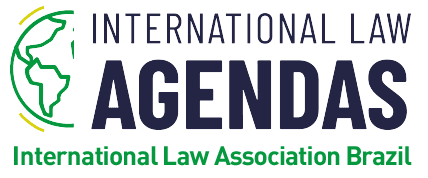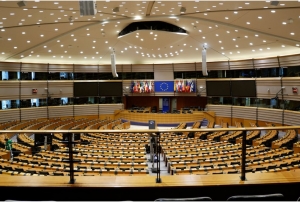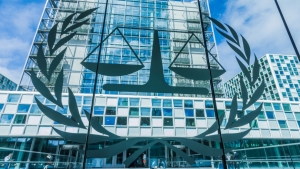The Tenth Review Conference of the parties to the Treaty on the Nonproliferation of Nuclear Weapons (NPT), will be held in New York from January 4 to 28, 2022. Such conferences should take place every five years but because of the pandemic it was necessary to postpone twice the one originally scheduled for April/May 2020 [1]. In spite of the inconvenience, the postponements might turn out to be beneficial.
In 2020 the climate of the relations between the two main nuclear powers – Russia and the United States – was particularly sour. Both were already engaged in a new competition in search for elusive military supremacy, while old and new disagreements marked the beginning of the second decade of the 21st century. President Donald Trump’s administration had resorted to aggressive rhetoric and imposed economic sanctions on Moscow as a sign of displeasure for several attitudes of the Russian government: the annexation of Crimea, the alleged poisoning of dissidents and grievances over human rights, plus continuing Russian military activities in the border with Ukraine. For its part, the eastward spread of NATO worries the Russians. The fragmentation of the Soviet Union after its demise in 1989 had given rise to a number of independent states in diferent parts of its previous territory. During the III Session of the Preparatory Committee for the NPT Conference the Russian delegation suggested the transfer of the latter to Vienna in protest for the American decision not to grant visas to some members of its delegation.
However, from the start of 2021 onwards the tone of pronouncements and mutual accusations became less strident. The new American president proposed a meeting person with his Russian counterpart in Geneva. In a joint communiqué they reiterated the 1987 mantra agreed in Reikjavik by Ronald Reagan and Mikhail Gorbachov that “a nuclear war cannot be won and must never be fought”. Biden and Putin also expressed their willingness to engage in a bilateral dialogue on strategic stability with the objective of launching the basis for future arms control and risk reduction measures.
The reaffirmation of the Reikjavik formula reinforces the understanding that none of the two powers intends to initiate a nuclear conflict. Nevertheless, even a limited conventional skirmish may lead, inadvertently or by accident, to an uncontrolled escalation and finally to a nuclear war [2] in which there will be no winners, but the loser will be the whole human race. The ideological divergences that characterized the 20th century were replaced by the current competition for military superiority mainly between the United States and Russia. The 2009 New START agreement between Barack Obama and Dmitri Medvedev limited the nuclear arsenals of the two powers but resulted in an acceleration of the efforts toward technological improvement on both nations’ forces, emulated to a certain extent by China.
The relative easing of tensions did not produce lasting progress; in reality, the dangers have become more acute. The geopolitical consequences of the implosion of the Soviet Union brought a heightened risk of military conflict between Ukraine and Russia, while the question of Taiwan’s status continues to fuel concern. Both situations represent a grave danger for international peace and security. Strong tensions persist in Northeast Asia and the Middle East. The possibilities of restoration of the JCPOA agreement on the Iranian nuclear program seem slim, while North Korea ramps up its efforts to achieve the capability to threaten the continental territory of the United States. Sectors of public opinion South Korea and Japan advocate the search for independent nuclear capability. The AUKUS pact between the United States, the United Kingdom and stirred fears of nuclear proliferation in the entire Pacific and Indian oceans area. All this will reverberate in the debates at the NPT Review Conference. Five out of the nine conferences of this kind hitherto held ended without the adoption of a consensus Final Document, including the previous one, in 2015. in order to avoid two consecutive failures, the 2022 Conference may have to settle for minimal results, such as a unanimous reiteration of the Reagan-Gorbachov mantra and/or a generic declaration of support to the objectives of the NPT without looking for more elaborate consensus in a final document,
Non-nuclear countries have consistently demanded the fulfilling of the disarmament commitments accepted by the five states recognized as “nuclear”. Although they do not deny their obligations, the latter seem to act as if the instrument bestowed on them the right to the permanent possession of nuclear arms and to utilize them as they see fit. At the same time, they strive to harden the already strict norms aimed at preventing the rise of new nuclear states.
Throughout the history of the NPT only four other countries beyond the above mentioned five have come to acquire nuclear weapons. None of them joined the NPT and for this reason are not obliged by its provisions. Article IX.3 of the Treaty defines as “nuclear weapon states” those that had detonated an atomic explosive device before January 1 1967 [3]. This time limit set in the past makes it impossible any change in the current set up unless there is a substantial modification of the terms of the instrument, which is highly improbable. It seems very difficult, in the current circumstances, that any new country might come to obtain such armament. However, it is possible that countries that possess enough industrial and technological capabilities may in the future knock at the doors of the nuclear club. That would undoubtedly represent a severe threat to international peace and security. Despite its shortcomings, the NPT can rightly be considered as an important factor to help prevent horizontal proliferation.
The inherently discriminatory order imposed by the NPT has been in place for fifty years. The Treaty represents an exchange between a legally binding renunciation to nuclear weapons and political commitments for the elimination of existing arsenals. The dominant perception among a large number of non-nuclear parties is that there is a huge deficit in the fulfilment of the commitments of the nuclear states, which diminishes the effectiveness and credibility of the instrument.
The history of the NPT shows fundamental divergences not yet resolved satisfactorily. At the General Assembly in 1968 nearly one-fourth of the UN membership abstained or voted against the resolution that approved the NPT [4].
In spite of the initial doubts and hesitations of many states, the NPT gradually mustered the support of a large majority of the international community. Among the members of the United Nations, only four are not parties to the NPT [5]. However, over the five decades of its existence, the dissatisfaction reflected in the above mentioned vote persisted and has grown in the face of the seeming lack of willingness of the five countries recognized as nuclear states to accept legally binding commitments to completely and irreversibly eliminate their arsenals in time-defined stages.
In 2017, a group of 122 non-nuclear countries parties to the NPT proposed a new path [6] to the achievement of a world without nuclear weapons: the negotiation of a treaty prohibiting those arms (TPNW). This instrument was negotiated in the same year and came into force in January 2021. The TPNW offers formulas applicable to both to non-possessors and to possessors of nuclear weapons so that according to each case they may either reinforce their non-proliferation commitments or get rid of their arsenals once adhering to the instrument. 89 countries already signed the TPNW and 57 have ratified it [7]. The five NPT nuclear states, however, are fiercely opposed and have formally declared that they do not intend to adhere to it, which they consider “counterproductive” and innocuous. However, their proposal of gradual increments in a “step by step” strategy has not succeeded in bringing about tangible progress toward the elimination of nuclear armament. The other four non-NPT nuclear states have remained indifferent to the TPNW.
Signatories and ratifiers of the TPNW will meet in March 2022 for the first time after its entry in force with the purpose of dealing with the implementation of the instrument, its institutionalization and universalization. At least four European nations, among which three members of NATO, including Germany – which has nuclear weapons stationed in its territory – have signaled their intention to attend that meeting as observers. In some others, public opinion movement advocate a similar intention. It should be noted that the TPNW forbids the placing of nuclear weapons in the territories of third parties. The steadfastness of the parties to the Treaty in the defense of its objectives and in the drive for new signatories and ratifications are essential elements for the progress of the efforts toward a world without nuclar weapons.
In recent occasions, some academics have suggested en masse abandonment of the NPT as a way to force the nuclear parties to honor their disarmament obligations. In an article published last November [8] two researchers reiterated and added to the arguments they had previously presented in other texts. They argue that “exiting the NPT can legitimately be used as a political tool to challenge the current status quo where five states claim a right to possess nuclear weapons based on the NPT, and to achieve a nuclear order where nuclear weapons are illegal for all”. It is fitting to observe that a collective abandonment of the NPT could lead to the demise of the whole international nuclear legal discipline, with unpredictable results.
Whatever the future may bring, there is no doubt that the NPT is in a delicate situation in its controverted trajectory. The success of the forthcoming Review Conference will not depend only on the diplomatic skill of its President and the main delegations, but also on the understanding that there is an urgent need for effective, irreversible progress in the fulfilment of the disarmament commitments contained in the instrument. The world cannot be resigned to the indefinite permanence and the possibility of use of a means of destruction so appalling and absolute as nuclear weapons. On the other hand, the inability to achieve a constructive result at the Tenth Conference will increase the deep divergences between nuclear and non-nuclear parties and will negatively affect the credibility and durability of the NPT. To prevent this to happen again it is necessary to ensure the full obedience to the commitments accepted in the NPT. The Review Conference is the appropriate forum to produce this result.
____________________
[1] In 2022 access by representatives of non-governmental organizations to the regularNPT meetings will not be allowed. No side events may be held in the UN premises.
[2] American retired general Lee Butler, former commander of STARATCOM, said in a 2015 interview that a nuclear war did not happen during the Cold War due to a combination of luck, skill and divine intervention- the latter in the highest proportion.
[3] China, United States, France, United Kingdom and Russia.
[4] See Resolution 2373 (XXIII).
[5] North Korea, Israel, India and Pakistan. All of them came to possess nuclear weapons. North Korea withdrew from the NPT and the other three never joined it. Officially, Israel does not confirm or deny possessing such weapons, although it is believed to have between 200 and 300 warheads.
[6] See Resolution A/71/258.
[7] Brazil was the first state to sign the TPNW, but the National Congress has not yet ratified it.
[8] When is it legitimate to abandon the NPT?, by Tom Sauer e Joelien Pretorius, Contemporary Politics, Volume 42, issue 4, 2021.
-

Embaixador, ex-Alto Representante das Nações Unidas para Assuntos de Desarmamento. Presidente das Conferências Pugwash sobre Ciência e Assuntos Mundiais. Colunista do IntLawAgendas.





